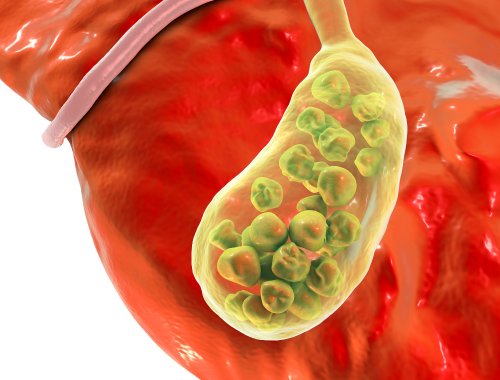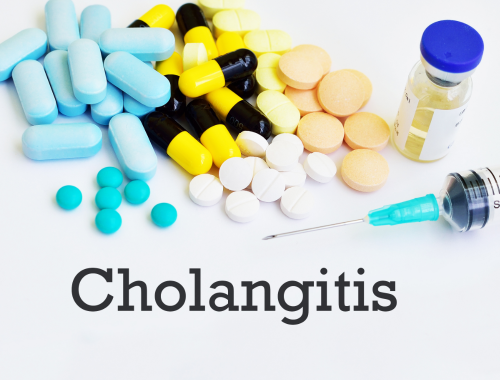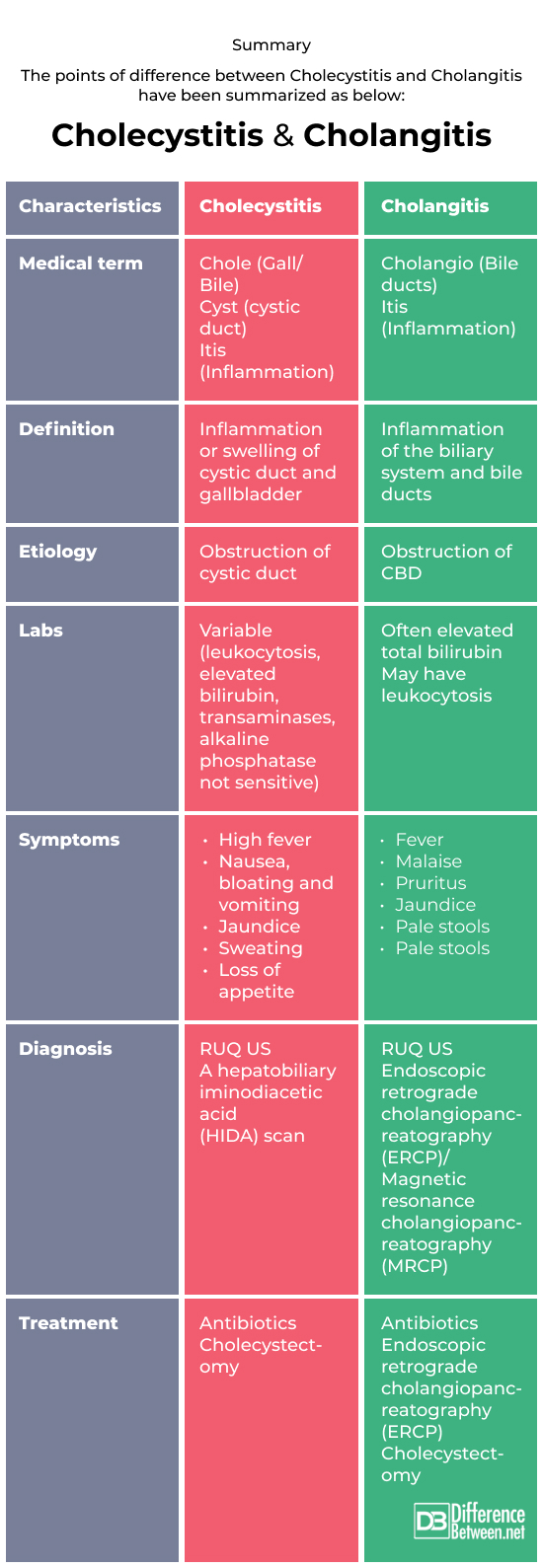Difference Between Cholecystitis and Cholangitis

Cholecystitis is the inflammation and redness of the small digestive organ beneath the liver – the gallbladder. Complications include – Infection within the gallbladder, death of gallbladder tissue (gangrene) due to untreated cholecystitis, torn gallbladder.
A bile duct infection, or cholangitis, is when the tubes that carry bile from the liver to the gallbladder and intestines become swelled and infected. Complications include – liver problems – liver scarring (cirrhosis), gallstones, enlarged spleen causing it to swell, enlarged veins.

Similarity
Both cholecystitis and cholangitis are conditions of the liver and bile duct system.
Difference between Cholecystitis and Cholangitis
Definition
Cholecystitis – Cholecystitis is the term for gallbladder (a small, pear-shaped organ on the right side of your abdomen) inflammation.
Cholangitis – It is a serious condition which involves swelling and infection of the tiny canals that connects liver to the small intestine – bile duct.
Symptoms
Cholecystitis
- A bulge in the abdomen
- High fever
- Pain that spreads to your right shoulder or back
- Abdomen tenderness
- Nausea, bloating and vomiting
- Chills
- Jaundice
- Sweating
- Loss of appetite
Cholangitis
- Pain in the upper right side
- Fever
- Fat deposits in the palms, soles of the feet
- Malaise
- Xanthomas – fat deposition around eyelids and eyes
- Night sweats
- Abdominal pain and bloating
- Swelling in feet and ankles
- Hyperpigmentation – skin darkening
- Pruritus
- Diarrhea
- Indigestion
- Jaundice
- Pale stools
- Pale stools
- Mood changes
- Weight loss
Types
Cholecystitis
- Calculous cholecystitis
- Acalculous cholecystitis
Cholangitis
- IgG4-related autoimmune cholangitis
- Primary biliary cholangitis
- Primary sclerosing cholangitis
Causes
Cholecystitis
Cholecystitis is caused by:
- Gallstones in gallbladder (gallstones)
- Tumor
- Bile duct blockage – Kinking or scarring of the bile ducts
- Infection that triggers gallbladder inflammation.
- Severe illness that can damage blood vessels and reduce blood flow to the gallbladder
Cholangitis
Cholangitis is caused by:
- a bacterial infection, tumor, gallstones, and obstructions
- Both acute and chronic cholangitis may have environmental causes because of:
- smoking, parasites, fungi, or bacterial infections
Treatment
Cholecystitis
- A hospital stay and surgical removal – bowel rest, intravenous hydration,
- Antibiotics and penicillin
- Medication, fluids, or blood directly into a vein.
- Percutaneous cholecystostomy (PC) as a minimally invasive alternative to surgery in case of critically ill patients who cannot undergo surgery
- Procedure called – endoscopic retrograde cholangiopancreatography (ERCP)
- Gallbladder drainage
Cholangitis
- Medications to help prevent the progression of the condition and reduce complications – Ursodeoxycholic acid (UDCA) also known as ursodiol (Actigall, Urso)
- Monitoring liver function
- Intravenous fluid and antibiotics – Fresh frozen plasma or vitamin K needed for correction of coagulopathy.
- Endoscopic therapy – procedures to open blocked ducts
- Liver transplant
Summary
The points of difference between Cholecystitis and Cholangitis have been summarized as below:

FAQ:
What is the main difference between cholecystitis and cholelithiasis?
Cholecystitis is the term for gallbladder (a small, pear-shaped organ on the right side of your abdomen) inflammation. The clinical term for the development of gallstones is cholelithiasis.
Is cholecystitis a cholangitis?
Acute biliary infection is called as either acute cholangitis or acute cholecystitis. Cholecystitis is a condition which involves swelling and redness of the gallbladder due to obstruction caused by gallstone that blocks bile from exiting the organ. Complications of cholecystitis or symptoms of cholecystitis becoming worse can result in cholangitis.
Is cholangitis the same as cholelithiasis?
No. Cholangitis is the swelling and infection of the liver’s bile ducts while cholelithiasis also termed as gallstones are pebble like pieces that can form in the gall bladder.
How does cholecystitis cause cholangitis?
Cholecystitis is a condition which involves swelling and redness of the gallbladder due to obstruction caused by gallstone that blocks bile from exiting the organ. Complications of cholecystitis or symptoms of cholecystitis becoming worse can result in cholangitis.
What are the diagnostic criteria for cholangitis?
A history of biliary disease (diseases affecting the bile ducts, gallbladder), such as gallstones, past biliary surgeries, and the implantation of a biliary stent (insertion of stents or plastic tubes to treat biliary leaks, increased serum levels of AST – Aspartate transaminase, ALT – alanine aminotransferase, GTP (GGT), and alkaline phosphatase – ALP as well as abdominal pain in the right upper quadrant (RUQ) or upper abdomen, are additional criteria that can aid in the diagnosis of acute cholangitis.
How is cholangitis diagnosed?
Your doctor will examine your past medical history and perform a physical check to make sure you have cholangitis. Other exams MRCP, endoscopic retrograde cholangiopancreatography (ERCP) and x-rays could be suggested by him or her. You could even be advised a complete blood count (CBC).
What are 5 signs of cholangitis?
Pruritus, malaise, rigors, chills and pain in the abdomen.
What is the hallmark of cholangitis?
Fever, decreased bile flow, jaundice (yellow skin caused by bilirubin in the blood), and occasionally abdominal pain are some of the clinical indications of cholangitis.
What is the gold standard for cholangitis?
Endoscopic retrograde cholangiopancreatography (ERCP) is the gold standard examination for acute cholangitis.
- Difference Between Global Warming and Greenhouse Effect - May 18, 2024
- Difference Between Vaccination and Immunization - March 3, 2024
- Difference Between Selective Mutism and Autism - February 25, 2024
Search DifferenceBetween.net :
Leave a Response
References :
[0]Lazaridis, K. N., & LaRusso, N. F. (2016). Primary sclerosing cholangitis. New England Journal of Medicine, 375(12), 1161-1170.
[1]Littlefield, A., & Lenahan, C. (2019). Cholelithiasis: presentation and management. Journal of midwifery & women's health, 64(3), 289-297.
[2]Pak, M., & Lindseth, G. (2016). Risk factors for cholelithiasis. Gastroenterology nursing: the official journal of the Society of Gastroenterology Nurses and Associates, 39(4), 297.
